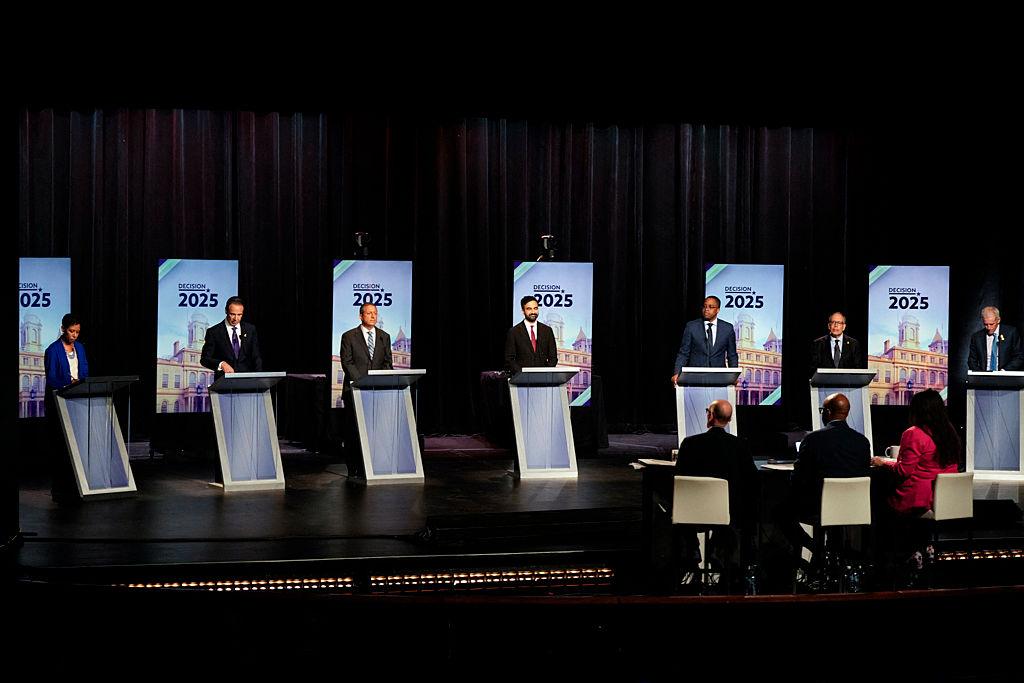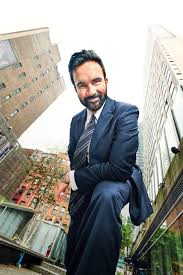Can Zohran Mamdani unseat Cuomo and redefine New York politics? Inside the explosive mayoral debate that has everyone talking

Can Zohran Mamdani unseat Cuomo and redefine New York politics? Inside the explosive mayoral debate that has everyone talking
The race to lead America’s largest city took a dramatic turn on Thursday night as Zohran Mamdani, Andrew Cuomo, and Curtis Sliwa faced off in a fiery debate at Rockefeller Center, Manhattan. With early voting set to begin next week, tensions ran high, and every moment seemed to carry national political weight.
Recent polling shows Mamdani, a progressive state assemblyman, widening his lead with 46%, followed by former Governor Andrew Cuomo at 33%, while Republican candidate Curtis Sliwa trails but continues to appeal to conservative and safety-conscious voters.
The stakes couldn’t be higher. The outcome of this mayoral election may reshape not only New York’s political direction but also signal where the Democratic Party is heading after its devastating 2024 presidential loss to Donald Trump.
A Debate Dominated by Ideology and Identity
From the start, ideological fault lines were clear. Mamdani — known for his strong progressive agenda — faced tough questions about his past remarks on Palestine and Israel. Moderators pressed him on whether his activism reflected bias, citing his refusal to condemn the controversial slogan “globalize the intifada.”
Mamdani, who has long advocated for Palestinian statehood, responded calmly, saying he aims to serve “all New Yorkers — Jews, Muslims, Christians, and everyone who calls this city home.”
Cuomo seized on the issue, branding Mamdani a “divisive figure,” suggesting his rhetoric could alienate parts of New York’s diverse population.
Meanwhile, Sliwa used the exchange to pitch himself as the practical alternative, saying New Yorkers needed “less ideology and more action.”
The Shadow of Trump Looms Over New York
Although only three candidates were on stage, a fourth presence dominated the night: Donald Trump.
The former president’s name surfaced repeatedly as candidates sparred over how they would handle his policies toward New York. Trump has threatened to withhold federal funds and deploy the National Guard in Democrat-led cities, including New York.
Mamdani vowed to “stand up to Trump” and resist federal overreach. Cuomo countered that he was the only one with the experience to manage a turbulent relationship with the White House, reminding voters, “I fought Donald Trump before, and I’ll do it again.”
Sliwa, however, took a more pragmatic stance, insisting that the city’s leader must “work with Washington regardless of party lines.”
Affordability Crisis: The Core of the Campaign
Despite the political theatrics, the issue that struck closest to home for many viewers was affordability.
All three candidates acknowledged New York’s skyrocketing living costs — from rent to groceries — as the city’s most urgent crisis.
Mamdani proposed a citywide rent freeze and free public bus service, calling housing “a right, not a privilege.” Cuomo, however, dismissed the rent freeze as “economically reckless,” arguing it would bankrupt landlords and fail to help those not in rent-stabilized apartments.
In a fiery exchange, Cuomo attacked Mamdani for living in a rent-stabilized apartment despite his family’s wealth, quipping that the assemblyman “talks affordability but doesn’t live it.” Mamdani hit back sharply:
“If you think the problem is that my rent is too low, vote for him. But if you know the problem is that your rent is too high, vote for me.”
Sliwa focused his message on public housing, calling for reforms to unlock thousands of vacant NYCHA units to help low-income families.
Cuomo’s Baggage Returns to the Spotlight
Cuomo, seeking redemption after resigning as governor in 2021 amid sexual harassment allegations, faced relentless questioning about his record. Mamdani accused him of “sending seniors to their deaths” during the COVID-19 nursing home crisis.
Cuomo vehemently denied wrongdoing, stating:
“There were investigations, and they showed we followed federal guidance. People died during COVID, and my heart breaks for every life lost.”
Sliwa joined the attack, referencing Cuomo’s “lawsuits and scandals,” while Cuomo shot back that the probe by then–Attorney General Letitia James was politically motivated.
Curtis Sliwa’s Showman Strategy
Though the underdog, Sliwa made sure his voice echoed through the auditorium. Drawing from his experience as founder of the Guardian Angels, he hammered home the theme of public safety, positioning himself as the defender of law and order in a city he said has “lost its grip on safety and sanity.”
With his trademark red beret and animated delivery, Sliwa interrupted exchanges to demand airtime and deliver punchy one-liners. Afterward, he told reporters the debate went “extraordinarily well,” adding that his opponents looked like “kids in a schoolyard fight.”
What’s Next for New York?
As early voting begins, New Yorkers must decide between Cuomo’s experience, Mamdani’s progressivism, and Sliwa’s populist grit. Beyond City Hall, the result could reverberate through national politics, shaping how Democrats and Republicans approach urban America in the post-Trump era.
FAQs
Q1: When does early voting for the New York City mayoral election begin?
A: Early voting begins next week, ahead of the general election.
Q2: Who are the leading candidates?
A: The top three contenders are Zohran Mamdani, Andrew Cuomo, and Curtis Sliwa.
Q3: What are the main issues in the race?
A: Affordability, public safety, and relations with the Trump administration dominate the campaign.
Q4: Why is Andrew Cuomo controversial?
A: Cuomo resigned as governor in 2021 following sexual harassment allegations and criticism over nursing home deaths during COVID-19.
Q5: How is Zohran Mamdani different from other candidates?
A: He represents a new progressive wave, focusing on rent control, free public transport, and social equity.


